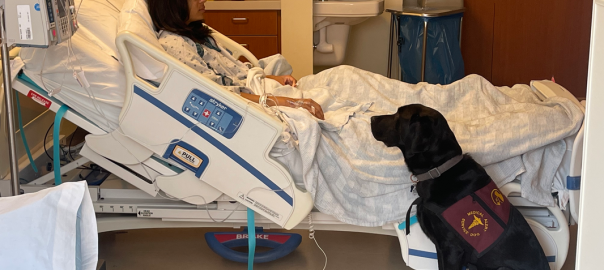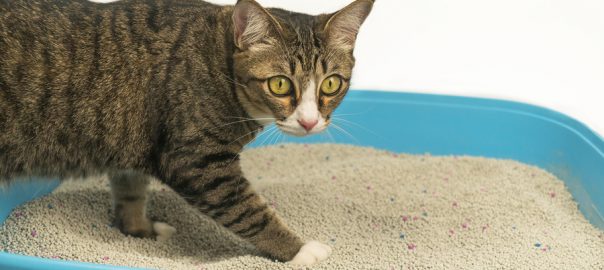Imagine being a 5-year-old type 1 diabetic or her exhausted parents. What would it be like to be a 19-year-old college student struggling to develop independence when your health, and even your life, often depend on others to help you? Can you feel what it would be like to be the spouse or family member who never gets the chance to sleep without worry that their loved one will have a diabetic crisis in the night?
Let all that sink in, and then imagine that a trained diabetes alert dog came into your life and made all that struggle disappear!
That’s what happened when Monique La Bomme found Early Alert Canines (EAC) and was matched with her first trained diabetic alert dog (DAD), EAC Waimea, who passed away in 2021. Today, Monique is partnered with her new dog, EAC Jolo.
Monique was recently hospitalized for Diabetic Keto Acidosis (DKA), which is a serious complication of diabetes that can be life-threatening. The day before she went to the hospital, EAC Jolo spent the day constantly alerting and refusing to leave her side. Monique did her best to correct her blood sugar but was unable to regulate it.
“The next morning I was headed to the hospital,” she said, “Without EAC Jolo’s constant concern I may have ignored my symptoms longer, but we caught it early, resulting in a much shorter hospital stay. Hospitals are depressing, DKA will change your plans in a second, and having the sweetest and most loving dog at your side definitely helps.”
She continued, “These dogs are trained to help us identify blood glucose changes faster than most of our technology and to help prevent the numerous complications that come with the disease.They do not necessarily train the dogs for emotional support, but I promise every last dog is proficient in providing love and understanding. You can’t cuddle with your insulin pump after a long day. Their work is truly unmatched and for a fraction of the cost these dogs are truly guardian angels.”
Friends, if you can, please support this important work and help EAC raise $5,000, the cost of adding one trained dog to their program. Other than a small training fee, the dogs are provided free of cost to type 1 diabetics, so your support is crucial.
Please donate here.
You can even create your own Facebook fundraiser here.
Thank you, my friends, for your compassion and generosity!




